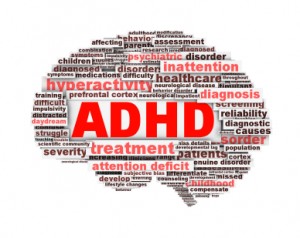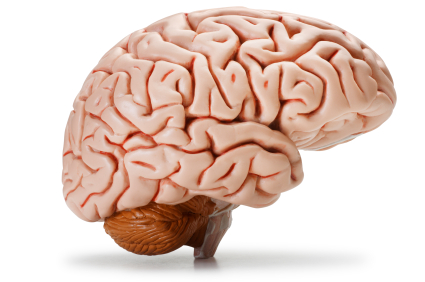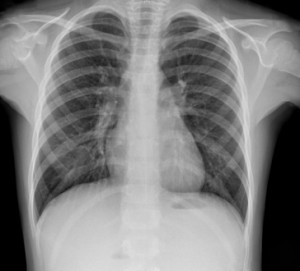Did you know that a dentist, physical therapist, psychiatrist and even a veterinarian are all professions that are considered part of the healthcare industry? Is the idea of helping others in some way while earning money appealing to you? There are many different career options in the healthcare field which include both skilled and unskilled labor. The choice is yours as to whether you wish to pursue a job that requires many years of education, several years or none at all. The following career options all have excellent job outlooks.
Physical Therapist
This area of expertise is growing faster than average according to the Bureau of Labor Statistics. Physical therapy (also referred to as physiotherapy) requires assessing, diagnosing and treating disease or injury disabilities. You would look over the patient’s medical history and test and measure things such as: strength, balance and coordination, range of motion, motor function, muscle performance, respiration and posture. Physical therapists utilize methods such as hot and cold therapy, manipulation, massage, traction and exercise to help their patients recover from or learn to manage physical challenges. Physical therapy can be a very demanding job physically as you may have to lift patients or move heavy equipment. Standing for long periods of time, crouching, kneeling and stooping are all part of being a physical therapist. In order to become a physical therapist you need between six to nine years of schooling. You can possibly work in a hospital, a clinic or a private office that is specially equipped. Physical therapists can conduct their work in hospital rooms, schools or homes. You can choose to work part-time or full-time.
Physical Therapy Assistant
If the area of physical therapy interests you but you don’t want to attend school for six to nine years then a physical therapy assistant could be your calling. A physical therapy assistant performs parts of physical therapy procedures and tasks but is assigned their duties by a supervising physical therapist. You would assist the physical therapist with various therapies intended to help patients improve their mobility, prevent or limit permanent damage which is physical and relieve pain. Patients could be accident victims or have a short or long-term disability of some type. This job is also physically demanding in the same manner as a physical therapist as you perform many of the same tasks such as lifting a patient. To become a physical therapy assistant you only need two years of education and can make an average of $46,000.
Occupational Therapist
Occupational therapists help clients to perform a variety of daily activities such as getting dressed, eating or using a computer. Typically your duties would include: creating treatment plans that increase a person’s ability to perform every day activities; conducting home and job site evaluations and recommending adaptations for the patient; training patients on recommended adaptation equipment; and providing guidance for caregivers and family members. Occupational therapists work in hospitals, schools and various other healthcare and community settings. More than one-third of all occupational therapists work part-time. Six years or more of education is typically required to become an OT. The average salary is upwards of $66,000. The job outlook for OT’s is excellent.
- Occupational Therapist Education: Website describes the career option and the job responsibilities, work environment and characteristics needed to be successful.
- About Occupational Therapy: The American Occupational Therapy Association, Inc. website discusses exactly what occupational therapy is and provides links for people seeking more on the subject.
- Career Information: The Duquesne University website explains occupational therapy as a profession and career, career growth options, job outlook and employment options as well as other things.
- What is an Occupational Therapist?: The University of Rochester Medical Center website explains what an occupational therapist is.
Occupational Therapy Aide
The assembly of equipment used during treatment and the preparation of materials are often performed by an occupational therapy aide. There are many other duties that an occupational therapy aide does such as answering phones, clerical work, ordering and restocking depleted supplies, and completing insurance forms and other paperwork. This position does not require further education and training is often conducted on the job. It is not a licensed position so you do not perform as diverse a range of tasks as occupational therapy assistants.
- Occupational Therapy Assistants and Aides: The Occupational Outlook Handbook provides significant points, nature of the work, working conditions, employment and other relevant information.
- About Occupational Therapy: An excellent PDF from the University of South Carolina that discusses the field of occupational therapy, different jobs within the field and education and career planning.
- Occupational Therapy Aide Career Information: This website explains what the job is, what they do, necessary knowledge, skills, abilities, work activities and other important issues.
Speech Language Pathologist
A speech language pathologist performs assessments, diagnoses and treats problems with speech, language, communication, voice, fluency, cognitive, swallowing and other similar disorders. They can also help to prevent these disorders. When a person has a problem making speech sounds clearly or correctly a speech pathologist can help them. Some people also have problems with the rhythm of their speech or with fluency. There are voice quality problems such as a harsh voice. People can have problems understanding language or may merely want to improve their communication skills by modifying an accent. Some people suffer from cognitive communication impairments such as attention or memory disorders. Eating and swallowing disorders caused by oral motor problems can also be aided by a speech language pathologist. Speech language pathologists can help many different people with a variety of problems. If you are considering becoming a speech language pathologist you should have good attention to detail, be able to concentrate intensely, possess the required knowledge and skills, and be able to deal with the emotional needs of patients and their families (which can be quite demanding). Most speech language pathologists work full-time but some work part-time. They work in a variety of settings such as schools, private practices and hospitals. The job requires six years of education and the average salary is about $62,000.
- Speech/Language Pathologist: The University of Chicago Medical Center website explains what a speech/language pathologist is and provides links with more information.
- What is a Speech-Language Pathologist?: The San Diego State University website offers information on what a speech-language pathologist is, work sites, entry requirements, earnings, work conditions, size of profession and future outlook.
- Career Information: The American Speech-Language-Hearing Association provides information on preparing for professions, graduate school and career entry.
- Academics-What is a Speech Language Pathologist?: The University of Redlands website discusses what a speech language pathologist is, job outlook, career information and essential functions.
Art Therapist
What is an art therapist? It is a career that is considered part of the mental health profession and utilizes the creative process of making art to help improve a patient’s well-being. This process is believed to help people to resolve conflicts, reduce stress, and manage behavior as well as other important things. The therapist can help a patient mentally, physically and emotionally through art and conversation. It is a combination of the fields of visual arts, human development and the creative process with forms of psychotherapy and counseling. It can be used with people of all ages for problems including: anxiety, mental illness, depression, substance abuse, relationship issues, and personal trauma among others. Some art therapists choose to work as part of a team with physicians, nurses, teachers, psychologists and other relevant professions. Some decide to work alone and maintain a private practice. There are many personal qualities which are necessary to become an art therapist including: flexibility, a sense of humor, keen observation skills, empathy, sensitivity, patience, emotional stability, good interpersonal skills, an understanding of artistic media, an attentive listener and possess an insight into human behavior. Six years of education are required to become and art therapist and the average salary is between $35,000 and $40,000.
- Art Therapist Overview: Explore Health Careers offers discusses what an art therapist is and does, academic requirements and resources for the profession.
- What is Art Therapy?: The Art Therapy Credentials Board, Inc. website offers a great explanation of what art therapy is.
- What is Art Therapy?: The website explains what art therapy is and what art therapists do.
Physician Assistants
Physician assistant positions are rated as one of Money magazine’s top ten best jobs in the U.S. They work under the guidance of a physician. They are formally trained to provide healthcare services recommended by the physician such as diagnostic, preventive and therapeutic. PA’s are part of a healthcare team and write down medical histories, look at and treat patients, order x-rays and laboratory tests and interpret results, make diagnoses and often prescribe medicine. Minor injuries that can be splintered, casted or sutured can be handled by PA’s. They can chart a patient’s progress, state and assist with therapy, and teach and counsel patients. They may have some managerial tasks such as supervising assistants and technicians. Sometimes they order lab and medical supplies. If a physician works in surgery they may need to stand for long amounts of time. They may need to check on patients in hospitals or make house calls and report their findings to the physician. The average salary for a physician assistant is $81,230.
Diagnostic Medical Sonographer
If you have ever been pregnant you may have had a sonogram performed for doctors to view the baby in your womb. This is just one possible task for a diagnostic medical sonographer. Images are produced through the use of sound waves and are used in the assessment and diagnosis of a variety of medical conditions which can involve the heart, abdomen, vessels or breasts. Sonograms can be utilized in conjunction with other similar image modalities such as MRI’s, x-rays and nuclear medicine studies. Most diagnostic medical sonographers have only two years of education but some have more. Two to four years of education is recommended and the average salary is upwards of $61,000.
Registered Nurse (RN)
A career as a registered nurse has been listed by the Bureau of Labor Statistics as one of the top ten occupations that have the largest job growth. Assessment, planning and intervention utilized in the promotion of health, prevention of disease and assisting of patients to cope with their illness are vital parts of being a registered nurse. RN’s are advocates and health educators for not only patients but also their families and communities. When working directly with a patient they observe, assess and document progress and reactions which lead to the determination of necessary care and intervention. RN’s are very important members of healthcare teams. There are many different jobs RN’s can perform besides patient care and management such as developing nursing practice standards, creating quality assurance procedures and conducting clinical research. They work with physicians and other healthcare providers. There are many specialty options available to RN’s that have their own training and certification requirements such as a Labor and Delivery Staff Nurse, a Critical-Care Nurse or a School Nurse. Four Advanced Practice clinical professions are also available to RN’s but all require a master’s degree and a separate certification. These four careers include: Clinical Nurse Specialist, Nurse-Anesthetist, Nurse-Midwife and Nurse Practitioner. In order to become an RN you need three to four years of education. The average salary is around $62,000.
 A common disorder affecting children is Attention Deficit Hyperactivity Disorder, otherwise known as ADHD. At one time, children with ADHD were misunderstood, with some people believing that children were simply misbehaving or that they had to have suffered some form of brain damage. Over time, as doctors and researchers have come to better understand the disorder, the number of children diagnosed with the disorder has also increased. Although studies vary, according to statistics presented by the CDC, there are approximately 5.2 million children between the ages of three and seventeen who have been diagnosed with the condition in the United States. This translates into approximately 8.4 percent of children within that age group. In nearly all instances the disorder does not fade as the child ages. Instead many children with ADHD turn into adults with the condition. Learning about ADHD can help parents to recognize the warnings signs that may lead to diagnosis. Knowledge of the condition also helps loved ones to better understand and cope with the condition and how it may affect a lifetime of interactions with others.
A common disorder affecting children is Attention Deficit Hyperactivity Disorder, otherwise known as ADHD. At one time, children with ADHD were misunderstood, with some people believing that children were simply misbehaving or that they had to have suffered some form of brain damage. Over time, as doctors and researchers have come to better understand the disorder, the number of children diagnosed with the disorder has also increased. Although studies vary, according to statistics presented by the CDC, there are approximately 5.2 million children between the ages of three and seventeen who have been diagnosed with the condition in the United States. This translates into approximately 8.4 percent of children within that age group. In nearly all instances the disorder does not fade as the child ages. Instead many children with ADHD turn into adults with the condition. Learning about ADHD can help parents to recognize the warnings signs that may lead to diagnosis. Knowledge of the condition also helps loved ones to better understand and cope with the condition and how it may affect a lifetime of interactions with others.
 Americans spend more than $50-billion per year for treatment of lower back pain. According to the National Institutes of Health, most Americans have experienced at least one day of lower back pain and eight out of ten adults will experience recurring back pain severe enough to interfere with work or normal daily activities. The good news is that most causes of back pain occur from mechanical incidents such as strains, sprains, or over use, and not serious conditions such as fractures, arthritis, or cancer. Knowing the best treatments for recovering from back injuries can have you pain free sooner and provide you the knowledge needed to lower your risk of recurring back pain in the future.
Americans spend more than $50-billion per year for treatment of lower back pain. According to the National Institutes of Health, most Americans have experienced at least one day of lower back pain and eight out of ten adults will experience recurring back pain severe enough to interfere with work or normal daily activities. The good news is that most causes of back pain occur from mechanical incidents such as strains, sprains, or over use, and not serious conditions such as fractures, arthritis, or cancer. Knowing the best treatments for recovering from back injuries can have you pain free sooner and provide you the knowledge needed to lower your risk of recurring back pain in the future.
 Medical terminology can sometimes sound like a foreign language all of its own. It is packed with industry-specific jargon, abbreviations and formal words that are not general used in common parlance; however, these very aspects allow people in this industry to communicate more effectively and be more specific. Just like any foreign language, those training in medicine should take the time to properly study and become familiar with medical language.
Medical terminology can sometimes sound like a foreign language all of its own. It is packed with industry-specific jargon, abbreviations and formal words that are not general used in common parlance; however, these very aspects allow people in this industry to communicate more effectively and be more specific. Just like any foreign language, those training in medicine should take the time to properly study and become familiar with medical language.
 Functions of the Body
Functions of the Body
